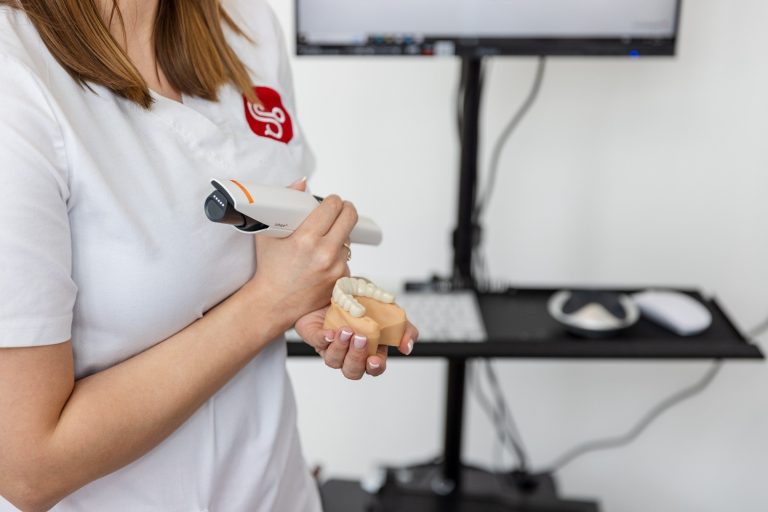How to treat sciatica? Learn the causes, symptoms and ways to prevent it

Sciatica is a sharp pain that radiates from the lumbar-sacral spine to the buttock and lower limb. Symptoms of sciatica significantly impede normal functioning, making it impossible to move freely and perform even simple activities. What are the most common causes of sciatica? What symptoms indicate an attack of sciatica? Is it possible to completely cure sciatica? We explain.
- What is sciatica?
- Sciatica – causes
- Symptoms of sciatica
- Treatment of sciatica
- How to prevent disease recurrence?
Sciatica is often preceded by pain in the lower back (around the lumbar spine), which is related to overload (e.g. due to physical work or sports) and injury (e.g. while lifting heavy objects). Pain in the lumbar spine is also caused by degenerative changes. The pain that indicates sciatica may appear suddenly or develop gradually. A characteristic symptom of sciatica is severe pain, which subsides slightly when lying down and increases during activity, coughing and sneezing. Sciatica may be accompanied by neurological symptoms in one or both lower limbs (e.g. sensory disturbances, tingling, numbness, muscle weakness, paresis of the foot extensor muscles). Treatment of sciatica is most often conservative.
What is sciatica?
Sciatica is a condition that affects 13-40% of the adult population. Symptoms of sciatica periodically recur in approximately 75% of patients. The pain associated with sciatica is caused by irritated nerve roots or pressure on the sciatic nerve.
Risk factors for sciatica include:
-
pregnancy,
-
overweight and obesity,
-
sedentary lifestyle,
-
degenerative changes in the lumbar spine,
-
curvature of the spine,
-
intense physical exercise.
In the course of sciatica, pain occurs in the area innervated by the sciatic nerve. The sciatic nerve is the largest nerve in the human body. It is formed by nerve roots that emerge from the spinal canal of the lumbar-sacral spine.
Sciatica – causes
What causes sciatica? The most common cause of sciatica is pressure on the sciatic nerve within the spinal canal, which is caused by discopathy (degenerative disc disease, hernia of the nucleus pulposus of the intervertebral disc). Other causes of sciatica include:
-
narrowing of the spinal canal, which is associated with a degenerative process,
-
spondylolisthesis, i.e. displacement of the bodies of adjacent vertebrae,
-
pressure of the uterus growing during pregnancy on the sciatic nerve,
-
inflammations,
-
pressure on the roots of the sciatic nerve caused by a cancerous tumor,
-
piriformis muscle syndrome.
Symptoms of sciatica
One of the first symptoms that indicate an attack of sciatica is sharp or increasing pain in the lumbar spine. A person suffering from sciatica experiences pain radiating from the lower back to the lower limb or lower limbs. During an attack of sciatica, the pain radiates to the buttock, thigh, lower leg and foot. Sciatica worsens during physical activity. The intensity of the pain may be so great that it prevents normal functioning. During an attack of sciatica, the paraspinal muscles are excessively tense, which limits the mobility of the lower spine.
In addition to pain radiating from the spine to the lower limb, neurological disorders may also occur, including:
-
sensory disturbances in the lower limb,
-
feeling of tingling or numbness,
-
weakening of muscle strength.
Sometimes, during an attack of sciatica, urination and defecation disorders also occur. To relieve pain, it is recommended to avoid physical activity and lie in the fetal position.
Treatment of sciatica
In most cases, conservative treatment of sciatica is used, which includes, among others:
-
oral and topical non-steroidal anti-inflammatory drugs that help reduce pain and inflammation;
-
muscle relaxants;
-
physiotherapy.
Cool compresses are used to support the acute phase of the disease. After the inflammation subsides, warm compresses can be applied. If the above methods of treating sciatica do not bring the expected improvement, stronger painkillers and anti-inflammatory drugs are used, including: in the form of injections. Symptoms of acute sciatica should improve within approximately 2-3 days of symptomatic treatment. A small percentage of patients with symptoms of sciatica require surgery.
How to prevent disease recurrence?
In approximately 75% of patients, sciatica recurs, e.g. after overloading the spine. To prevent recurrence of the disease, it is necessary to take care of the health of the spine and prevent excessive load on it. Physiotherapy and regular physical activity, which strengthens the paraspinal muscles, play an important role in preventing sciatica. People suffering from sciatica should adopt appropriate posture when sitting and use a mattress that has been properly selected for the needs of the spine.
It is worth knowing that the health of the spine is influenced not only by lifestyle, but also by the diet used, which helps maintain appropriate body weight, nourishes the body and prevents its dehydration.
Sources:
-
Cunningham C., Sciatica, PZWL Medical Publishing House, Warsaw, 2007
-
Kwolek. A., Physiotherapy in neurology and neurosurgery, Wydawnictwo Lekarskie PZWL, Warsaw, 2012






